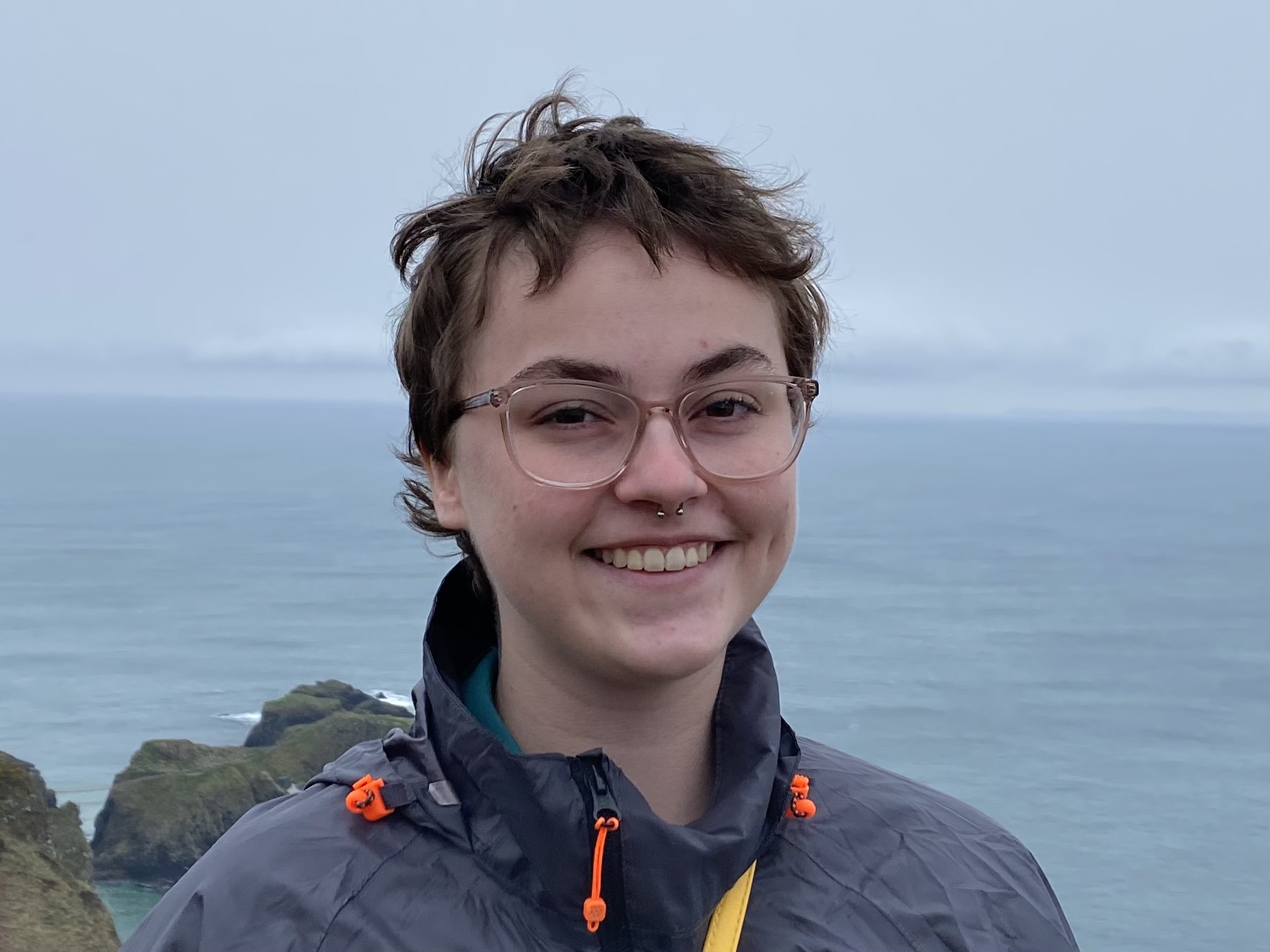Research Symposium
23rd annual Undergraduate Research Symposium, April 6, 2023
Ava Trail Poster Session 4: 4:00 pm - 5:00 pm/ Poster #53

BIO
Ava Trail is a first-year student from Navarre, FL, prusuing a BS in Biologial Science. She is a UROP student in the Kranz lab working under Dr. Sven Kranz to study the growth of different phytoplankton species. Ava plans to attend grad school after undergrad and continue studying plants and animals. In their free time Ava enjoys hiking, crochet, and playing with dogs.
Understanding and describing the growth of the coccolithophore Emiliania huxleyi, an important microalgae in the ocean
Authors: Ava Trail, Dr. Sven KranzStudent Major: Biological Science
Mentor: Dr. Sven Kranz
Mentor's Department: Department of Earth Ocean and Atmospheric Science Mentor's College: College of Arts and Sciences Co-Presenters:
Abstract
Emiliania huxleyi (E. hux) is a unicellular algae (group of coccolithophores) found in most oceans around the world. This unicellular organism can grow rapidly to very high biomass, building the base of the marine food-web. Phytoplankton growth generally has four phases: a lag phase when cells adapt their metabolism to the favorable growth conditions; exponential phase when the cells replicate as fast as they can, drawing down nutrients; stationary phase when cells are deprived of at least one nutrient; lastly, the death phase when cells die. This project focuses on growth and nutrient uptake of E. hux, grown in artificial seawater made with a limiting nutrient mix. Cultures were measured daily for around 4 weeks using flow cytometry, variable fluorescence and nutrient analysis. It took the cells about five days to acclimate to their new conditions and afterwards transitioned into their exponential phase, taking up most of the nutrients. Between about 11 -13 days the cells reached their stationary phase at about 150,000 -200,000 cells/mL when their nitrogen supply became very low. The cells started dying after day 13. None of the E. hux cultures depleted all the nitrogen content available to them, meaning that E. hux might be phosphorous limited instead of nitrogen limited. Work is currently being performed to harvest E. hux at its peak growth phase and feed it to Karenia brevis, the algae that makes up the red tide, to figure out how the phytoplankton interact.
Keywords: phytoplankton, E. hux, coccolithosphere


